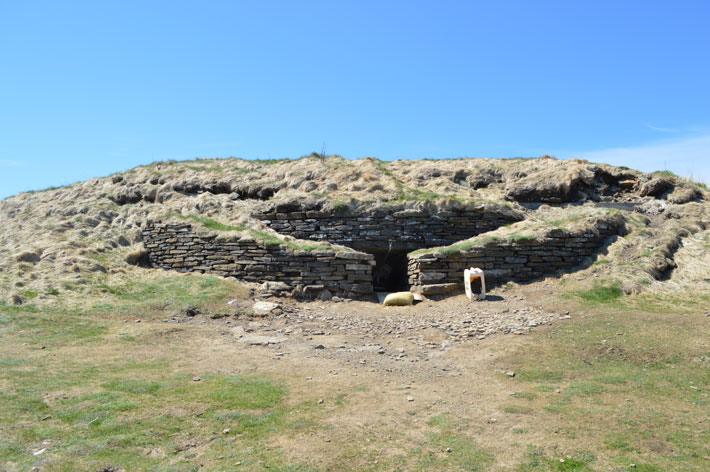 YORK, ENGLAND—According to a statement released by the University of York, Karen Hardy of the University of Glasgow and her colleagues analyzed dental calculus samples taken from 74 individuals whose remains were recovered from 28 archaeological sites across Europe, and found seaweed and freshwater plants were consumed in the Mesolithic period, through the Neolithic transition to agricultural life, and into the early medieval period. “This strongly suggests that the nutritional benefits of seaweed were sufficiently well understood by these ancient populations that they maintained their dietary link with the sea,” explained team member Stephen Buckley of the University of York. The samples included traces of red, green, and brown seaweeds, while one sample from Scotland’s Orkney islands contained evidence of the consumption of sea kale. But by the eighteenth century A.D., seaweed was considered something to be fed to animals or eaten during famine. Hardy suggests that seaweeds could serve as an alternative, local, sustainable food resources for today’s populations. For more on the Orkney archipelago, go to "Neolithic Europe's Remote Heart."
YORK, ENGLAND—According to a statement released by the University of York, Karen Hardy of the University of Glasgow and her colleagues analyzed dental calculus samples taken from 74 individuals whose remains were recovered from 28 archaeological sites across Europe, and found seaweed and freshwater plants were consumed in the Mesolithic period, through the Neolithic transition to agricultural life, and into the early medieval period. “This strongly suggests that the nutritional benefits of seaweed were sufficiently well understood by these ancient populations that they maintained their dietary link with the sea,” explained team member Stephen Buckley of the University of York. The samples included traces of red, green, and brown seaweeds, while one sample from Scotland’s Orkney islands contained evidence of the consumption of sea kale. But by the eighteenth century A.D., seaweed was considered something to be fed to animals or eaten during famine. Hardy suggests that seaweeds could serve as an alternative, local, sustainable food resources for today’s populations. For more on the Orkney archipelago, go to "Neolithic Europe's Remote Heart."
Early Europeans Enjoyed Seaweeds and Water Plants
